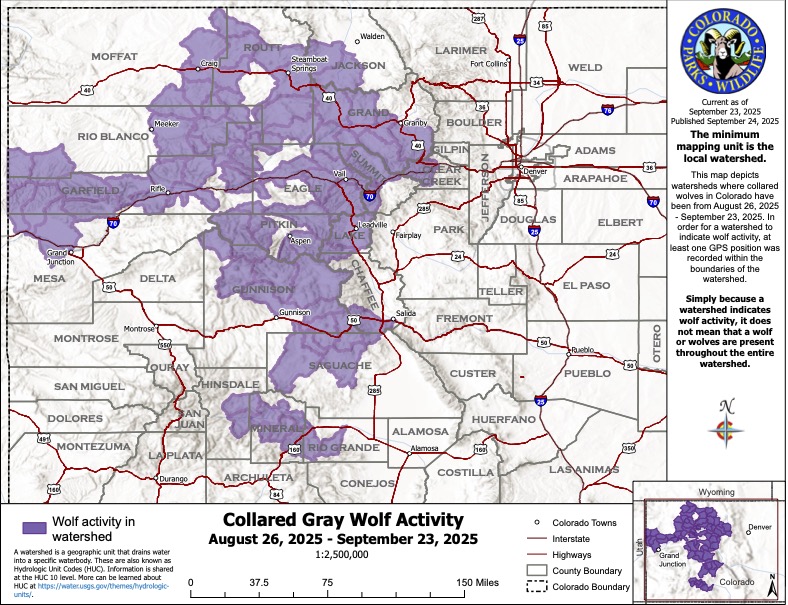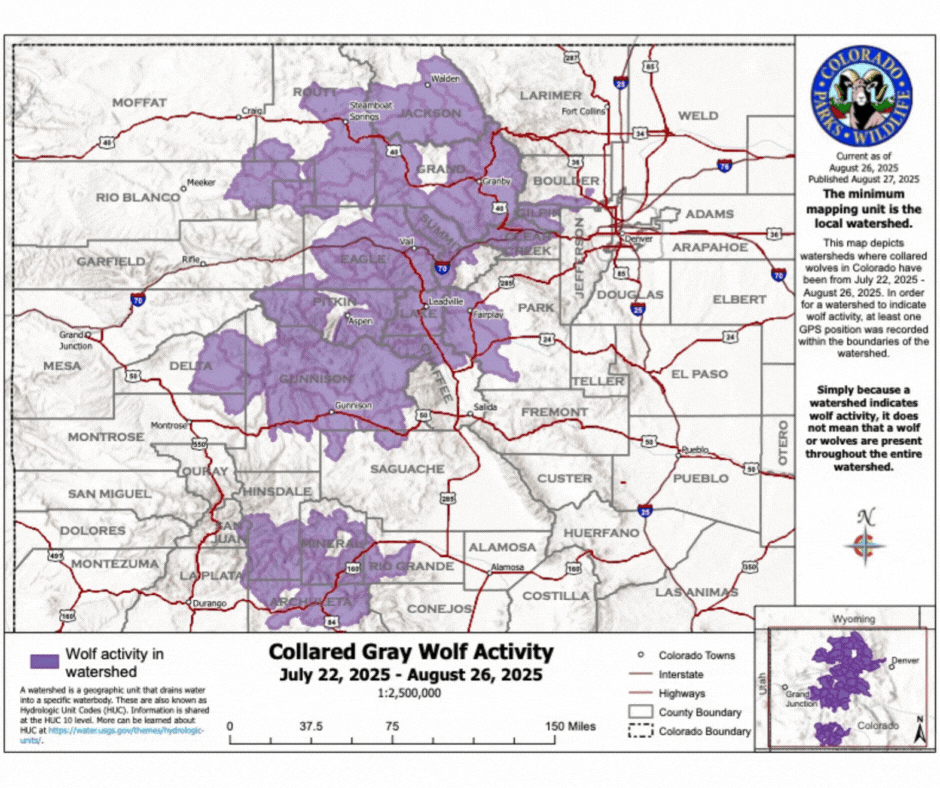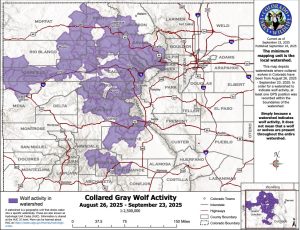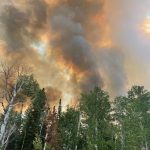Colorado’s wolf map shows movement near Utah border — but officials won’t say whether any wolves left the state
Colorado Parks and Wildlife has an agreement with Utah to return wolves if they cross into the state

Colorado Parks and Wildlife/Courtesy illustration
Colorado’s collared gray wolves are continuing to move across the Western Slope, including watersheds along the state’s western border with Utah.
In the latest map from Colorado Parks and Wildlife — which shows the watersheds where the state’s collared gray wolves were located between Aug. 26 and Sept. 23 — the wolves stuck to familiar watersheds in Gunnison, Pitkin, Eagle, Summit, Grand and Routt counties.
The map also showed wolf activity in Garfield, Rio Blanco and Mesa counties, including in several watersheds along the state’s border with Utah.
Watersheds in southern parts of the state also saw some wolf activity over the past month, including parts of Saguache, Mineral and Rio Grande counties.
If a watershed is highlighted on the map, it means that at least one GPS point from one wolf was recorded in that watershed during the 30 days. GPS points are recorded every about four hours.
Colorado Parks and Wildlife’s statewide public information officer, Luke Perkins, said Wednesday that he could not provide information about whether any wolves had crossed the border into Utah.
“CPW doesn’t comment on the movement of wildlife outside of the state of Colorado, unfortunately,” Perkins said, in response to a question about the wolf activity at the Utah border. “I don’t have any comment on that, nor would I know.”

In Colorado, gray wolves are considered “state endangered” under the federal Endangered Species Act and are designated as an experimental population under a special rule from the U.S. Fish and Wildlife Service.
But when wolves leave Colorado, they lose certain protections afforded to them by both state and federal laws. What happens next depends on which state they enter.
If a wolf crosses north into Wyoming, it can be shot anytime without a license. This year, three of Colorado’s reintroduced wolves have crossed over into Wyoming, where they’ve been killed.
However, if a wolf heads west into Utah, Colorado Parks and Wildlife has a joint agreement with the state that requires any gray wolves that cross over can be captured and returned.
With the map release, Parks and Wildlife stated that its staff are continuing to monitor dens to establish not only a minimum count of pups, but a minimum count of the state’s wolf population. These minimum counts will be published in its annual biological year reports.
The latest annual report was published in June and covered April 1, 2024, to March 31, 2025. This set the minimum count at 29 wolves. Since then, however, at least six wolves have died and more have been born.

Support Local Journalism

Support Local Journalism
As a Summit Daily News reader, you make our work possible.
Summit Daily is embarking on a multiyear project to digitize its archives going back to 1989 and make them available to the public in partnership with the Colorado Historic Newspapers Collection. The full project is expected to cost about $165,000. All donations made in 2023 will go directly toward this project.
Every contribution, no matter the size, will make a difference.










